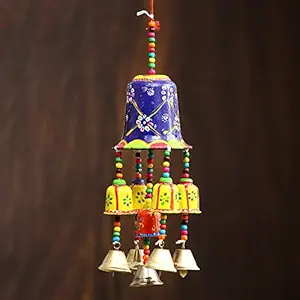અંબામાના ઉંચા મંદિર નીચા મોલ
ઝરૂખડે દિવા બળે રે લોલ
મા તારા ઉંચા મંદિર…
અંબા માના ગોખ ગબ્બર અણમોલ કે
શિખરે શોભા ઘણી રે લોલ
અંબામાના ઉંચા મંદિર…
આવી આવી નવરાત્રી ની રાતો કે
બાળકો રાસ રમે રે લોલ
મા તારા ઉંચા મંદિર…
અંબે મા ગરબે રમવા આવો કે
બાળ તારા વિનવે રે લોલ
અંબામાના ઉંચા મંદિર…
અંબા માને શોભે છે શણગાર કે
પગલે કુમકુમ ઝરે રે લોલ
મા તારા ઉંચા મંદિર…
રાંદલમાં ગરબે રમવાને આવો કે
મુખડે ફૂલડા ઝરે રે લોલ
અંબામાના ઉંચા મંદિર…
ખોડીયાર માં ગરબે રમવા ને આવો કે
આંખો થી અમિ ઝરે રે લોલ
મા તારા ઉંચા મંદિર…
માં તારું દિવ્ય અનુપમ તેજ કે
જોઈ મારી આંખો ઠરે રે લોલ
અંબામાના ઉંચા મંદિર…
ગરબો તારા બાળકો ગવરાવે કે
મસ્તાન તારે પાયે પડે રે લોલ
મા તારા ઉંચા મંદિર…
Overview of "Ambe Mana Uncha Mandir"
Title & Meaning
'Ambe Mana Uncha Mandir' is a devotional Gujarati Garba dedicated to Goddess Amba, celebrating her temple and divine presence.
Artist & Popularity
The Garba has been sung by many folk artists and is widely performed in Navratri festivals across Gujarat.
Cultural Value
The song reflects deep-rooted faith and cultural pride, often sung in traditional gatherings.
Language & Tradition
Written in Gujarati, the lyrics are tied to Navratri rituals and temple worship.
Historical Relevance
The song keeps alive folk traditions that connect devotees with Goddess Amba’s ancient temple.
Lyrics Structure & Themes
Devotional Praise
Lyrics glorify Goddess Amba and her temple, symbolizing divine blessings.
Spiritual Symbolism
The temple is seen as a symbol of strength, purity, and divine grace.
Refrains & Rhythm
Repetitive lines help dancers and singers stay in sync during Garba.
Imagery of Temple
The song uses vivid imagery of the high temple, bells, and sacred chants.
Community Faith
Highlights collective devotion and the importance of temples in Gujarati culture.
Musical & Performance Elements
Traditional Instruments
Garba beats with dhol, dholak, manjira, and claps create an energetic rhythm.
Tempo & Flow
The song maintains a steady rhythm, gradually building momentum for dancers.
Dance Formation
Encourages circular formations, with devotees clapping and rotating around the center.
Live Performance Appeal
This Garba shines best in live Navratri nights with audience participation.
Audience Engagement
Listeners are motivated to sing, clap, and join the group celebration.
Festival & Cultural Significance
Navratri Importance
Central Garba during Navratri rituals, symbolizing devotion and joy.
Spiritual Devotion
The song represents surrender and prayers for blessings from Goddess Amba.
Heritage Value
Keeps the Gujarati Garba folk culture alive across generations.
Social Bonding
Brings together families, friends, and communities in celebration.
Emotional Connection
Singing about Amba’s temple fills devotees with pride, love, and joy.
How to Use & Share
Translations & Accessibility
Translations help non-Gujarati speakers understand and sing along.
Embed Audio & Video
Embed YouTube and audio versions to engage visitors on websites.
Printable Lyrics & PDFs
Provide downloadable lyrics for personal, cultural, and event use.
Dance & Costume Guides
Offer tutorials on Garba steps, costumes, and performance etiquette.
SEO & Social Media Optimization
Boost reach with keywords like Garba, Navratri, Amba temple; encourage social sharing.
'Ambe Mana Uncha Mandir' is a devotional Gujarati Garba dedicated to Goddess Amba, celebrating her temple and divine presence.
The Garba has been sung by many folk artists and is widely performed in Navratri festivals across Gujarat.
The song reflects deep-rooted faith and cultural pride, often sung in traditional gatherings.
Written in Gujarati, the lyrics are tied to Navratri rituals and temple worship.
The song keeps alive folk traditions that connect devotees with Goddess Amba’s ancient temple.
Lyrics glorify Goddess Amba and her temple, symbolizing divine blessings.
The temple is seen as a symbol of strength, purity, and divine grace.
Repetitive lines help dancers and singers stay in sync during Garba.
The song uses vivid imagery of the high temple, bells, and sacred chants.
Highlights collective devotion and the importance of temples in Gujarati culture.
Garba beats with dhol, dholak, manjira, and claps create an energetic rhythm.
The song maintains a steady rhythm, gradually building momentum for dancers.
Encourages circular formations, with devotees clapping and rotating around the center.
This Garba shines best in live Navratri nights with audience participation.
Listeners are motivated to sing, clap, and join the group celebration.
Central Garba during Navratri rituals, symbolizing devotion and joy.
The song represents surrender and prayers for blessings from Goddess Amba.
Keeps the Gujarati Garba folk culture alive across generations.
Brings together families, friends, and communities in celebration.
Singing about Amba’s temple fills devotees with pride, love, and joy.
Translations help non-Gujarati speakers understand and sing along.
Embed YouTube and audio versions to engage visitors on websites.
Provide downloadable lyrics for personal, cultural, and event use.
Offer tutorials on Garba steps, costumes, and performance etiquette.
Boost reach with keywords like Garba, Navratri, Amba temple; encourage social sharing.

कपास दिया गोल बत्ती (पूजा प्राकृतिक सफेद)
Buy Now
Arthashastra By Kautilya - A Masterpiece On Economic Policies | Ancient Indian Political Philosophy | Hindu Spiritual Wisdom | Timeless Teachings | Practical Guidance [Paperback]
Buy Now